
News • The fatal signalling pathway
How liver fibrosis causes tissue scarring
An international research team has now found an approach to lower the activation of hepatic stellate cells (HSCs) and reduce the associated development of liver fibrosis.

An international research team has now found an approach to lower the activation of hepatic stellate cells (HSCs) and reduce the associated development of liver fibrosis.
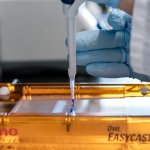
A platform for studying how the human immune system responds to hepatitis C infection by combining microfluidic technology with liver organoids could speed the hunt for a vaccine.

Scientists have investigated the effectiveness of various common hand disinfectants against hepatitis E. They were able to show that most formulations do not completely inactivate the virus.

Even as we battle one pandemic (Covid-19), we sit on the cusp of another. Europe has one of the highest burdens of chronic liver disease (CLD) in the world, driven largely by alcohol overconsumption, viral hepatitis, and obesity. Furthermore, non-alcoholic fatty liver disease (NAFLD) is increasingly common and is a significant contributor to CLD – especially in people with diabetes, where its…
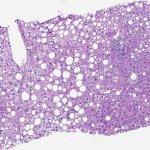
Professor Dina Tiniakos, from the National and Kapodistrian University of Athens, predicts that NASH (Non-alcohol related steatohepatitis) cases will soar worldwide by 2030, with 800,000 liver deaths, costing health economies billions of dollars.

Autoimmune hepatitis (AIH) is a chronic liver inflammation that is triggered by an immunological malfunction. In this case, the immune system falsely recognises the patient's own liver cells as "foreign to the body". The symptoms of this rare liver disease are unspecific, and the exact cause is not yet known. If left untreated, AIH can lead to abnormal scarring (fibrosis) of the liver,…
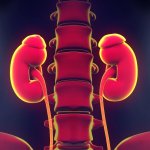
Non-alcoholic fatty liver disease (NAFLD) is the most common liver disease in western countries, with an increasing incidence worldwide. Consequences of NAFLD can also include kidney disease and kidney stones, although the mechanisms for the development of these kidney complications as a result of NAFLD have not yet been fully explained. Researchers at the Leibniz Research Centre for Working…

With the application of a novel 3D imaging technology, researchers at Karolinska Institutet have discovered that one portion of the autonomic nervous system in the liver undergoes severe degeneration in non-alcoholic fatty liver disease. The study, which is conducted in mice and human liver tissue, shows that the degeneration of nerves is correlated with the severity of liver pathology. The…
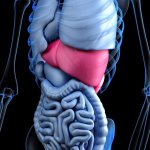
Handheld laser devices that help surgeons quickly spot liver damage could transform transplant procedures, research suggests. The non-invasive technique could provide medical staff with instant data on the health of donor livers and help them to identify which organs are suitable for transplant. If widely adopted, the light-based tool could allow more livers to be transplanted safely and…

Researchers from the Canadian University Healh Network (UHN) have developed and validated a deep learning model to predict a patient's long-term outcome after receiving a liver transplant. First of its kind in the field of Transplantation, this model is the result of a collaboration between the Ajmera Transplant Centre and Peter Munk Cardiac Centre (PMCC). The study, published in Lancet Digital…
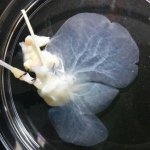
Researchers at the Human Genome and Stem Cell Research Center (HUG-CELL), hosted by the University of São Paulo’s Institute of Biosciences (IB-USP) in Brazil, have developed a technique to reconstruct and produce livers in the laboratory. The proof-of-concept study was conducted with rat livers. In the next stage of their research, the scientists will adapt the technique for the production of…
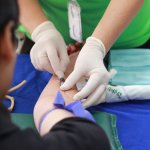
New research has shown that results of blood tests routinely performed by GPs everywhere contain a hidden fingerprint that can identify people silently developing potentially fatal liver cirrhosis. The researchers have developed an algorithm to detect this fingerprint that could be freely installed on any clinical computer, making this a low-cost way for GPs to carry out large scale screening…

AI is revamping workflows and experts showed how radiologists can integrate it into their department to improve daily practice and healthcare at ECR. The panel also discussed the health economics side of AI to help radiologists define which products make more economic sense for their department. The session tackled automated organ segmentation, an interesting application for AI in radiology.
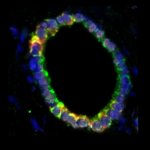
Scientists have used a technique to grow bile duct organoids – often referred to as ‘mini-organs’ – in the lab and shown that these can be used to repair damaged human livers. This is the first time that the technique has been used on human organs. The research paves the way for cell therapies to treat liver disease – in other words, growing ‘mini-bile ducts’ in the lab as…

The 2020 Nobel Prize in Medicine is awarded to three scientists who have made a decisive contribution to the fight against blood-borne hepatitis, a major global health problem that causes cirrhosis and liver cancer in people around the world. Harvey J. Alter, Michael Houghton and Charles M. Rice made seminal discoveries that led to the identification of a novel virus, Hepatitis C virus.
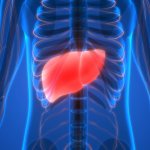
It’s currently difficult to screen for certain liver diseases and to monitor these conditions once they’re discovered. A team led by investigators at Massachusetts General Hospital (MGH) and the Massachusetts Institute of Technology (MIT) recently developed a non-invasive imaging method that has promising clinical potential to accomplish both goals. The technique is described in a study…

Non-alcoholic fatty liver disease (NAFLD) is mostly diagnosed in overweight and obese people. However, severe forms of NAFLD can also be detected in rare genetic diseases such as lipodystrophy or in patients with HIV, putting them at a high risk for developing liver failure, diabetes and cardiovascular diseases. Norbert Stefan and colleagues have now detected a yet unknown cause of NAFLD in lean…
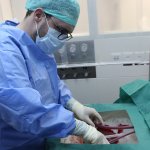
Researchers from the University Hospital Zurich, ETH Zurich, Wyss Zurich and the University of Zurich have developed a machine that repairs injured human livers and keeps them alive outside the body for one week. This breakthrough may increase the number of available organs for transplantation, saving many lives of patients with severe liver diseases or cancer. Until now, livers could be stored…

A new effective treatment of hepatitis C that was made available to all Danes last year, not only combats the virus, but is also effective against potentially fatal complications such as reduced liver functioning and cirrhosis. This is the result of a new study from Aarhus University and Aarhus University Hospital. Hepatitis C is a serious disease, but the biggest threat to someone’s health is…

Non-alcoholic fatty liver disease (NAFLD) is becoming the most common chronic liver disorder in developed countries. Histological analysis of liver tissue is the only widely accepted test for diagnosing and distinguishing different stages of NAFLD. However, this technique provides only two-dimensional images of the liver tissue in low resolution and overlooks potentially important 3D structural…

Fatty liver disease is contributing to an increase in liver cancer and basic scientists at The University of Texas Health Science at Houston (UTHealth) have new insight as to why. In the journal Cancer Research, the investigators report that in mouse models, excess fat impairs the ability of a tumor-suppressing protein named HNF4α to do its job. “This study provides potential mechanisms for…
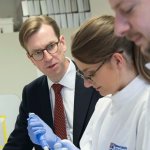
A pioneering European research project designed to develop new diagnostic tests to assess patients with Non-Alcoholic Fatty Liver Disease (NAFLD) has expanded giving access to more patients. Liver Investigation: Testing Marker Utility in Steatohepatitis (LITMUS) funded by the European Innovative Medicines Initiative 2 Joint undertaking, brings together clinical scientists from international…

The traditional classification of diabetes, mainly in type 1 and type 2 diabetes, has been challenged by studies from Scandinavia. In the current issue of The Lancet Diabetes & Endocrinology, researchers from DDZ together with colleagues from DZD and University of Lund published a cluster analysis of diabetes allowing for phenotyping into subgroups, which extended the findings by showing that…
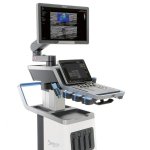
SuperSonic Imagine announces that a multicenter retrospective study conducted in Europe and China, has confirmed the clinical utility of ShearWave Elastography in patients with chronic liver disease, the first results of which were presented at the International Liver Congress (ILC 2019). The objective of this study was to evaluate the diagnostic value of ShearWave Elastography (SWE) in the…
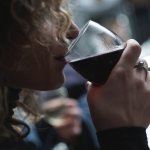
A review of evidence by researchers at King’s College London has found high levels of alcohol dependence among hospital inpatients. The researchers estimate one in five patients in the UK hospital system uses alcohol harmfully, and one in ten is alcohol dependent. Currently little is being done to screen routinely for alcohol dependence in hospitals, and services for patients with alcohol…